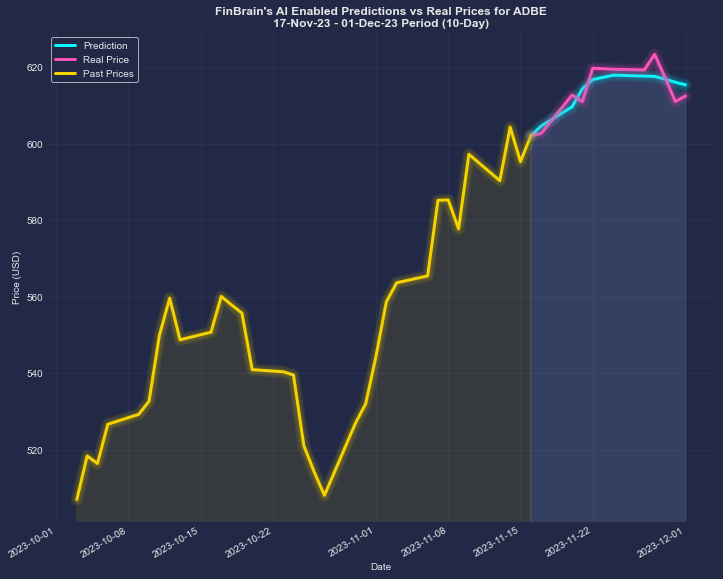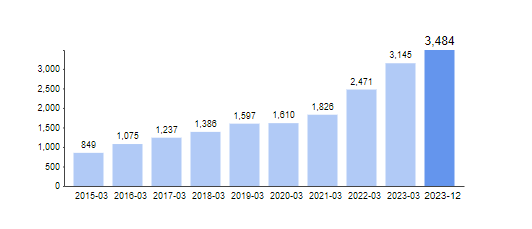20 Pro Pieces Of Advice For Picking AI Stock Trading Sites
20 Pro Pieces Of Advice For Picking AI Stock Trading Sites
Blog Article
Top 10 Tips To Evaluate The Customer Support Of Ai Platform For Predicting/Analyzing Trades
Customer support is the most important aspect when selecting the right platform for AI analysis and prediction of stocks. Support that is prompt and reliable is an important factor in resolving problems, increasing the efficiency of the platform, and also ensuring smooth trading. These are the top 10 suggestions on how to evaluate the support provided by these platforms.
1. Review the availability of support
24/7 Support: Make sure the platform offers 24/7 customer support. This is crucial when trading in real-time as well as global markets.
Hours of operation If there isn't 24/7 support available, you should ensure that support is in place at your trading times.
Holiday coverage: Verify whether support is available on weekends, holidays, or closing of markets.
2. Test Response Times
Initial response Test the support team by submitting a simple test query.
Resolution time: Measure the length of time required to solve a problem.
Live chat: Test the efficiency and responsiveness of the live chat service.
3. Review the Support Channels
Multiple channels: Make sure the platform can handle multiple channels, such as live chat, phone, email or social media.
The preferred channel: Make sure that your preferred support channel (e.g. phone, email or chat) is accessible and reliable.
Self-service Options: To address issues quickly, you can use the extensive Knowledge Base including FAQs, Community Forums.
4. Examine Support Qualities
Expertise - Ensure that the support staff you hire are well versed in issues with platforms, trading and technical issues.
Problem-solving: Assess whether the support agent can resolve difficult issues efficiently or escalate these appropriately.
Professionalism: Ensure that your support interactions are professional, courteous and efficient.
5. Find Account Managers who have a passion for their job.
Support premium: Verify that higher-tier users and institutional customers have access to specialized account managers.
Account managers should offer individualized support and advice that is proactive.
Relationship Building: Ensure that the account managers you work with are always available. It is also possible to build relationships over time.
Review Documentation
Knowledge base: Make sure whether the platform has an easily searchable, well-organized and comprehensive knowledge base, including tutorials and guides.
Tutorial videos Check if can find video tutorials on the platform.
API documentation. API documents are important to developers.
7. Review peer and community support
Forums for users: Find out if the platform has an active user community or forum where users can share tips and solutions.
Look for social media groups that are not official (e.g. Reddit or Facebook). These groups allow users to speak about the platform.
Community engagement: Check whether the team on your platform is actively involved in discussions or forums within the community.
8. Evaluate Escalation Processes
Issue escalation - Make sure that there's a clearly defined procedure for elevating unresolved concerns to support or management levels.
Follow-up - See if the support team continues to follow up with you after you've fixed the issue.
Feedback loops: Check the capability of the platform to gather user feedback to improve support services.
9. Test Support During Critical situations
Market volatility: Examine the responsiveness of staff members during periods of high market volatility.
Technical problems: Simulate a technical issue (e.g. login issues, data discrepancy) to observe the way support tackles it.
Trade execution: Check whether support can help in urgent trade-related issues (e.g., failed orders, execution delays).
10. Review Feedback from Users on Support
Online reviews: Read user reviews on platforms like copyright, G2, or Reddit to gauge general satisfaction with support.
Testimonials: Search for case studies or testimonials that highlight positive experiences with support.
Learn the way that the platform handles complaints and negative feedback.
Bonus Tips
Support for the trial period: To evaluate the performance of the platform, you are able to test its support for a trial period of no cost.
Support for languages: If you're an English-speaking non-native, confirm whether you can get support in your language of choice.
Training and onboarding. Make sure the platform provides sessions to help new users onboarding or train users.
If you follow these guidelines You can easily evaluate the level of customer service offered by AI stock predicting/analyzing trading platforms Make sure you choose one that offers reliable, responsive, and helpful assistance. A strong customer service can improve the overall user experience as well as help you make the most of the features of the platform. View the recommended discover more on ai for investing for blog tips including ai trading platform, ai stocks to invest in, chart ai for trading, free ai investing app, best stocks to invest in, ai stock market, ai trading tools, copyright ai bot, trading ai bot, ai bot for copyright trading and more.
Top 10 Tips On Assessing The Speed And Latency Of Ai Stock Predicting/Analyzing Trading Platforms
The speed and latency of the trading platform are important factors to consider, especially for active traders as well as high-frequency investors and algorithmic traders. Milliseconds of delay could impact trade execution and profitability. Below are the top ten strategies for evaluating speed and latency on these platforms:
1. Examine Real-Time Data Feeds
Data delivery speed - Ensure that the platform is able to provide real-time information with minimal delay (e.g. an under-millisecond latency).
Closeness of the data source: Find out if servers are located near major exchanges.
Data compression: Verify if the platform uses efficient data compression techniques to speed up data delivery.
2. Test the speed of trade execution
Time to process orders: Determine how quickly the platform handles and executes trades after you've submitted your order.
Direct Market Access: Confirm that the platform provides DMA. DMA is a feature that allows you to send orders directly to exchanges, without intermediaries.
Check for detailed execution reporting, which includes timestamps and confirmations of your order.
3. Assess Platform Responsiveness
User interface (UI also known as speed of the user interface) The speed of user interface is a measure of how quickly a platform's UI responds to the inputs you enter (e.g. clicking buttons or loading graphs).
Chart updates: Check to see if the charts and visualizations are updated in real-time with no lag.
Mobile app performance: If you are using a mobile application make sure it runs similarly to the desktop version.
4. Check for Low-Latency Infrastructure
Server locations: The platform should use low-latency, high-speed servers that are located close to major financial hubs or exchanges.
Co-location Services: Check if the platform allows co-location. This allows you to store your trading algorithms on servers close to the Exchange.
High-speed networks: Check if the platform uses high-speed fiber optic networks or low-latency technology.
5. Test the backtesting and simulation speed
Historical data processing: Test how fast the platform process and analyzes historical data for backtesting.
Simultaneous simulation of trades The platform should be able to simulate trading in real-time without obvious delay.
Parallel processing: Determine whether your system uses distributed computing or parallel processing to accelerate calculations.
6. The API Latency Measurement
API response time: Measuring how quickly the platform’s API responds (e.g. retrieving market data or placing an order).
Rate limits. Examine what limits are appropriate on the API. This can aid in preventing delays during high-frequency transactions.
WebSocket support: Find out if the platform uses WebSocket protocols for real-time and low-latency data streaming.
7. Test Platform Stability with Load
The scenarios of trading with high volumes Test the stability and responsiveness by simulating trading scenarios.
Check the platform during times of high volatility in the market to make sure it can handle rapid changes in price.
Utilize the tools available on the platform to stress test your strategies in extreme conditions.
8. Examine network and connectivity
Internet speed requirements: Make sure that your connection is at the recommended speed of your platform.
Redundant connection: Check to find out if there are redundant connections in the network.
VPN latency If you're using a VPN for connection, make sure it doesn't create significant delay. Also, make sure the provider offers alternative options.
9. Make sure to check for speed enhancement features
Pre-trade analytics: Make sure that the platform provides pre-trade analytics to optimize the routing of orders and speed of execution.
Smart order route (SOR) You can check to determine if SOR is utilized by the platform in order to identify the most efficient and cost-effective execution venues.
Latency monitoring: Determine whether your platform comes with tools that let you examine and monitor latency in real-time.
Check out user feedback and benchmarks
Feedback from users: Use user reviews to determine the platform's performance in terms of speed and latency.
Third-party benchmarks: Seek out independently-run benchmarks or reviews comparing the speed of the platform with competitors.
Case studies: Check whether a platform offers instances or case studies which highlight the features that are low-latency.
Bonus Tips:
Utilize the trial period or free demo period to test your platform’s speed and latency under real-world conditions.
Customer support: see if the platform provides assistance for issues with latency or optimization.
Hardware requirements: Determine if your platform needs specific hardware for maximum performance.
With these suggestions you can be able to accurately evaluate the speed, latency and the accuracy of AI stock prediction/analyzing trading systems. This allows you to choose a platform according to your specific needs in trading as well as reducing any delay. A low latency is essential for traders who trade high-frequency, or algorithmically where even small delays could affect their performance. See the recommended get more info on best stock analysis website for more advice including ai day trading, trading ai bot, ai copyright signals, ai copyright trading, investment ai, ai stock, investing in ai stocks, best ai stocks to invest in, ai stock price prediction, best ai stocks and more.